The League of Women Delegates & Sinn Féin
Published in 20th-century / Contemporary History, Features, Issue 3 (Autumn 1996), Revolutionary Period 1912-23, Volume 4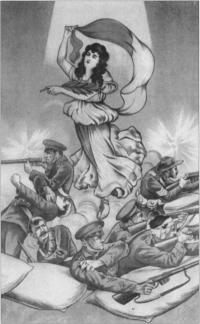 The 1917 Sinn Féin Convention was a crucial watershed in the Irish struggle for national independence. It was the culmination of a process of reorganisation that had begun almost as soon as the quicklime had settled upon the bodies of the executed leaders of the Easter Rising. For a significant group of Irish women, many of whom had taken part in the rising, some having husbands or other relatives who had sacrificed their lives to the cause, the task of perfecting the political machinery so that resistance could be continued was not their only concern. They were determined to ensure that the policies of the movement lived up to the promise contained in the Proclamation of the Republic, that ‘equal rights and equal opportunities’ would be enjoyed by all citizens in the future Irish Republic. The failed insurrection of 1916, as Irish suffragist Hanna Sheehy-Skeffington recognised, was unique in being ‘the only instance…in history where men fighting for freedom voluntarily included women’. Now the men who had made that commitment were dead and republican women were left to consider how their pledge could be put into effect.
The 1917 Sinn Féin Convention was a crucial watershed in the Irish struggle for national independence. It was the culmination of a process of reorganisation that had begun almost as soon as the quicklime had settled upon the bodies of the executed leaders of the Easter Rising. For a significant group of Irish women, many of whom had taken part in the rising, some having husbands or other relatives who had sacrificed their lives to the cause, the task of perfecting the political machinery so that resistance could be continued was not their only concern. They were determined to ensure that the policies of the movement lived up to the promise contained in the Proclamation of the Republic, that ‘equal rights and equal opportunities’ would be enjoyed by all citizens in the future Irish Republic. The failed insurrection of 1916, as Irish suffragist Hanna Sheehy-Skeffington recognised, was unique in being ‘the only instance…in history where men fighting for freedom voluntarily included women’. Now the men who had made that commitment were dead and republican women were left to consider how their pledge could be put into effect.
Women most active post-1916
The Rising had been dubbed the ‘Sinn Féin rebellion’ by those at a loss to know how else to describe it. In reality, Sinn Féin had declined to little more than a newspaper edited by its founder, Arthur Griffith. Those who had taken part in the Rising—the Irish Volunteers, the Irish Citizen Army and the women’s organisation, Cumann na mBan—together with Sinn Féin and other small nationalist groups, were faced
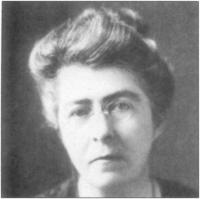
Hanna Sheehy-Skeffington-1916 ‘the only
instance … in history where men tlghting for
freedom voluntarily included women’.
with the daunting challenge of creating an entirely new political movement in the midst of disarray and military defeat. During the months the prisoners remained in jail, those on the outside concentrated their energies in organising relief for dependants and in revitalising the national spirit through commemorative masses for the executed leaders and in defiant welcoming ceremonies for those released from jail. Nearly all of this work was undertaken by women. For the first year after the Rising, the demands on their time were such that political women were unable to consider their own needs in the changing circumstances in which they found themselves. Gradually, however, they discovered that the task of reorganisation was beginning and the realisation began to dawn that if they did not insist upon a voice in this process their male comrades would have reorganised and determined future policies without consultation or inclusion of their female colleagues.
The recognition that women were in danger of being marginalised came about in the aftermath of an important meeting held on 19 April, 1917, almost exactly one year after the Rising. Count Plunkett, father of one of the executed leaders, had convened the meeting to determine whether his ‘Liberty Clubs’ or Arthur Griffith’s Sinn Féin would become the nucleus of the new nationalist political movement. The issue was not resolved, but it was agreed that negotiations would continue and a number of people were selected for this purpose. The only woman on what was called the ‘Council of Nine’ was Countess Plunkett, the wife of the Count. Many women were unhappy at this situation, doubtful whether the elderly Countess was suitable for the task and angry that their sex should have been given only one representative. One month after the 19 April meeting, the dissidents came together to discuss the situation.
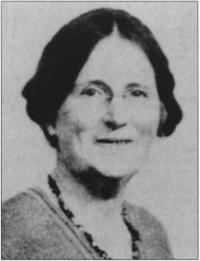
Dr Kathleen Lynn-replaced Countess
Plunkett as ‘sale representative’ on Sinn
Fein’s ‘Council of Nine’.
League of Women Delegates formed
Those who attended this meeting included representatives of the Inghinidhe branch of Cumann na mBan, executive members of Cumann na mBan, the Irish Women Workers’ Union and women from the Irish Citizen Army. The venue was the home of Countess Plunkett. Significantly, each meeting of this informal group took place in the home of a member, apart from one, hastily convened in the bathroom adjoining the Round Room of the Mansion House. Although they were prominent women, well respected within nationalist circles, when it came to organising an internal caucus to further women’s interests they seem to have decided it would provoke less controversy if they stayed away from public venues. The minutes of all the meetings of this group, who called themselves the ‘League of Women Delegates’, were scrupulously kept, hand-written in a hardback exercise book. Other than that source, we would know very little about the existence of this group of feminist nationalists. Understanding the controversies they engaged in and the resistance they encountered adds considerably to our appreciation of the determination of that generation of women activists to fight for the interests of their sex.
Aine Ceannt, widow of Eamon Ceannt, was one of the principal figures in the group. She chaired its first meeting. Countess Plunkett was asked to give an account of the ‘Council of Nine’, on which she represented the women of Ireland. There was obviously a feeling that this one representative, selected rather than elected, was an inadequate symbol of Irish women’s newly acquired status, particularly now that they had the guarantee of future equality contained in the Proclamation of the Republic. The first
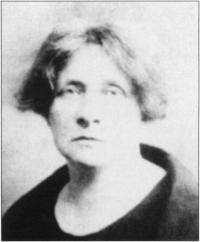
Helena Molony-seconded the motion
demanding six women representatives.
decision the group came to was low-key and nonconfrontational. Madeleine ffrench-Mullen (a former member of the Citizen Army garrison in Stephen’s Green) was instructed to write to Dr Dillon (son-in-law of the Plunketts) asking him to point out the fact, when writing to nationalists around the country, that women were equally eligible to be delegates on all Councils.
The women at this meeting represented a considerable cross-section of opinion. It was agreed that they would reconvene from time to time, to discuss subjects of importance which might arise. They realised that they needed the strength that numbers could give. It was not sufficient to rely upon their various individual organisations as a means of formulating demands. Taken separately, their numbers were much fewer and Cumann na mBan and the Irish Women Workers’ Union, as ‘women’s organisations’ had little influence wit
hin the overall movement. The pace of events began to quicken. Political reoganisation was continuing, differences of opinion between the male leaders were being smoothed over, but all this was occurring without any consultation of women. In June the group met at the home of Aine Ceannt in order to consider their response to the news that the ‘Council of Nine’ was about to co-opt six new members from the prisoners who had been released. None of those members would be women. A great feeling of indignation was evident, despite the constraints imposed by the convention of formal minute-taking.
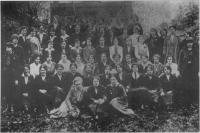
Women of the National Aid Association, comprised of members of Cuman na mBan, Clan na nCael and the Irish Citizens’ Army, photographed in the summer of 1916 in the garden of Mr and Mrs Ely O’Carroll. Madeline {french-Mullen and Dr Kathleen Lynn are seated at the front on the left and right respectively. (Kilmainham Gaol Collection)
Countess Plunkett, the ‘sole representative’ of the women of Ireland was ‘unfortunately laid up’, and unable to participate in the Council so the women took the decision to appoint Dr Kathleen Lynn (formerly medical officer of the Irish Citizen Army) as substitute. They had no intention of asking male permission for this change. Jenny Wyse-Power, seconded by Helena Moloney, then proposed the
following resolution:
Taking into consideration the number of members of your executive, we, representing the various interests of the great bulk of the women of Ireland, propose a representation of six, to be chosen by our body.
‘Surprise and indignation’
The suspicion that women were being ignored was confirmed by the news that a new committee, calling itself the Sinn Féin Executive Committee, had been formed through an amalgamation of Sinn Féin and the Liberty Clubs. It was a cause of ‘much surprise and indignation’, the minutes noted, to discover that the new organisation refused to include Cumann na mBan representatives although men from the Irish Volunteers were automatically to be co-opted. If Cumann na mBan was the female counterpart of the Volunteers, the women could not understand why they were denied an equality of representation within this new, enlarged organisation. To make matters worse, the men insisted that societies standing for Sinn Féin alone were the only ones that could be represented. There was obviously one rule for the men and another for the women. The League of Women, struggling to determine what was happening in an organisation which had to all intents and purposes excluded their sex from its deliberations, expressed ‘much surprise and dissatisfaction’ that their representative, Countess Plunkett, had not informed them of this new reorganisation, despite the fact that the amalgamation of groups had taken place some six to eight weeks previously.
It was clear that some of the most politically astute women in the nationalist movement suspected that they were being sold out, their claims to equality ignored in the political machinations underway, and that an agenda was being created in which they would have no voice or influence. They were not going to accept this state of affairs.
Constance Markievicz co-opted
The remaining prisoners were released on 16 June. Eamon de Valera, the only surviving commandant of Easter Week was now free and prepared to take over the mantle of leader from the opposing factions headed by Count Plunkett and Arthur Griffith. Also released was the most prominent of all female republicans, Constance Markievicz. At their next meeting, on 30 July, the League of Women co-opted Markievicz as a member. Discussion once again centred around what their tactics should be in the continuing and so far unsuccessful campaign to ensure adequate representation of women within the overall political organisation.
Their next move was a direct challenge to the reorganised Sinn Féin. Their previous request for representation having been ignored, some now argued for a deputation to the Sinn Féin offices. They decided on a less confrontational tactic to begin with, and another letter was written demanding that six women be co-opted immediately onto the executive of Sinn Féin. Their nominees were Kathleen Clarke, Aine Ceannt, Jenny Wyse-Power, Kathleen Lynn, Helena Moloney and Alice Ginnell. Women’s anger at their visible lack of importance was barely concealed:
Seeing that you are enlarging your Council to include six members of the Irish Nation League elected by that body, and also six prisoners to be elected by the prisoners, the time seems opportune to include also six women, elected by women.
The precedent of the Proclamation was cited, but the women did not want to rest their case on this precedent. Their claim, they stated firmly, was also
based on the risks women took, equally with the men, to have the Irish Republic established, the necessity of having their organised co-operation in the further struggle to free Ireland and the advantage of having their ideas on many social problems likely to arise in the near future.
Underlying this was the implicit threat that women’s co-operation might be withheld if they continued to feel as marginalised and undervalued as they did at that particular time.
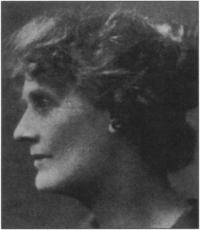
Constance Marlcievicz–co-opted as a
member of the League of Women in July
1917.
Request for representation refused
The request was refused. The next meeting, on 17 September (a time lag which probably indicates that Sinn Féin took its time before replying), was held at the home of Kathleen Lynn. Helena Moloney, always an advocate of direct action, urged an immediate deputation to the offices of Sinn Féin, but others felt that this might lead to further humiliation. Someone said, in bitter tones, that women had ‘applied often enough’. Instead of courting another rejection it was decided to ask Cumann na mBan to use its influence to persuade Sinn Féin of the importance of drawing women into the organisation. A Sinn Féin Convention was being planned—an event which, it was hoped, would bring together all the various separatist groupings in a new agreed organisation that would take account of the changing circumstances. The majority feeling was that it would be a wise move to join Sinn Féin because if women were members they could ensure that women had a presence at the Convention. The only dissenting voice was that of Fiona Plunkett, who remained loyal to her father’s rival Liberty Clubs. Kathleen Lynn, still acting as the substitute for the unwell Countess Plunkett, was mandated to bring before the Sinn Féin executive a resolution which would stress the fact that ‘men’ should be taken as including women, and that in all speeches men and women should be mentioned. It was hoped that by bringing this to the executive and getting their backing before the Convention, it would then go forward as an executive resolution. This would have greater weight than a resolution coming from women alone.
It seems unbelievable that the women were not granted the courtesy of a reply to their letter, but they were not. They finally agreed that they had no option but to march in deputation to Sinn Féin. The stalwart figure of Jenny Wyse-Power, a former vice-president of the old Sinn Féin, headed a group consisting of herself, Aine Ceannt, Helena Moloney and Fiona Plunkett. All the different viewpoints within the women’s united front were represented. Aine Ceannt was actively involved in recruiting for Cumann na mBan, Jenny Wyse-Power was a member of Cumann na mBan and the Irish Women’s Franchise League, Helena Moloney was working for the Irish Women Workers’ Union, Fiona Plunkett represented the younger generation of women activists.
At long last the women succeeded in extracting a significant concession: four (not six) ‘ladies’ would be co-opted onto the executive, on the understanding that none of them represented any organisation, and that they were all members of a Sinn Féin branch. There was obvious concern to prevent the possibility of the formation of an organised feminist caucus. The four members of the deputation were confirmed as delegates, although Aine Ceannt, in the interests of continuity, stood down in favour of Kathleen Lynn who had been only a temporary replacement for Countess Plunkett. Four months after the informal ‘League of Women Delegates’ had been formed, their efforts had met with success. Women were now on the executive of a regenerated Sinn Féin.
Few women delegates selected
Women were a visible and vocal presence at the Sinn Fein Convention of 1917, as historians have noted, but the carefully recorded testimony of the League of Women enables us to understand how different reality was from appearance. There was great excitement in the last weeks leading up to the Convention. The women hoped the event would provide them with an opportunity to meet like-minded individuals from all over the country so that their Dublin-based group could be extended and put onto a more formal footing. However, while they were planning a social event and an inaugural meeting to launch this new organisation they were dismayed to discover that only twelve women had been selected as delegates to a convention which would have more than one thousand participants. The ordinary Sinn Féin member was not ready to have women represent his interests in this important meeting in Dublin. Rosamund Jacob from Waterford was possibly the only woman from outside the capital to have crossed the gender barrier at this time.
Despite this set-back, they met at the home of Countess Plunkett on the Thursday evening before the start of the weekend proceedings. Winifred Carney and a number of other women from Belfast were amongst the gathering. They realised that it was premature to launch an all-Ireland organisation but they agreed to continue in their task of promoting women’s interests in as many spheres as possible. They decided to Gaelicise their name to Cumann na Teachtaire and to work to ensure that women would be elected onto public boards and onto all institutions within the Sinn Féin organisation. Reluctantly, they had to drop the idea of producing a women’s newspaper, but they agreed to produce leaflets and to try to link up with other women’s societies.
When the Convention met, the women’s resolution, originally drawn up by the League of Women, was proposed by Kathleen Lynn and seconded by Jenny Wyse-Power: ‘that the equality of men and women in this organisation be emphasised in all speeches and leaflets’. It was passed, by general agreement. The women’s tactic in getting executive backing had paid off. Another resolution, proposed by Lawrence Ginnell, urging that women form half of all co-optees onto the executive, was ruled out of order. However, a precedent had been set, and four women were elected to the new twenty-four member executive, while considerable numbers of women were later co-opted onto the various organisations set up by Sinn Féin as it refined its machinery of civil resistance to British rule in Ireland.
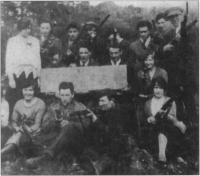
Women continued to play an active role in
the War of Independence, as this photograph
of an unidentified IRA flying column
demonstrates. (Kilmainhaim Gaol Collection)
1918 general and 1920 local elections
These co-options were neither inevitable nor automatic. They would not have occurred without continued pressure from Cumann na Teachtaire. The battle over the Convention of 1917 was only the beginning of a long process. Resolutions promising equality meant nothing if women were not represented within all levels of the nationalist movement and that struggle was one which continued throughout the War of Independence. Cumann na Teachtaire realised they had been unprepared for the difficulties involved in persuading Sinn Féin to select women candidates for the 1918 election. Kathleen Clarke, imprisoned in Holloway jail, discovered that male machinations had prevented her from being selected and Hanna Sheehy-Skeffington rejected the offer of an unwinnable constituency so Constance Markievicz and Winifred Carney were, in the end, the only female candidates. Hanna Sheehy-Skeffington also protested that the Markievicz election campaign had been the worst in the country. It would appear that the male Sinn Féiners left it up to the women to canvass for their candidate, and their inexperience showed.
Well in advance of lists of candidates being compiled for the local government elections in 1920, Cumann na Teachtaire wrote to Sinn Féin with names of suitable women who were willing to stand. They also asked Hanna Sheehy-Skeffington, an exceptionally able public speaker, to organise a speakers class for women. This preparation led to numbers of women (including the majority of those who had been actively involved in organising for such increased public representation) becoming councillors and poor law guardians in the January and June elections of 1920. The intensification of the War of Independence forced many nationalist organisations underground and the League of Women/Cumann na Teachtaire ceased to meet after January 1919. Their efforts had achieved a certain amount for women, but it was obvious that considerable resistance to their presence within Sinn Féin remained. In her capacity as Director of Organisation of Sinn Féin, Hanna Sheehy-Skeffington felt obliged to conclude her instructions to Sinn Féin Cumainn for the period 1921-22 with the following blunt exhortation:
An impression exists in some districts that membership of Cumainn is confined to men. This is a mistake and every effort should be made to secure (sic) that women shall not only be on the roll of members, but take an active share in the work of Cumainn and the Sinn Féin movement generally.
Sadly, once that organisation of independent and outspoken women disappeared, the commitment to continue to promote equality between the sexes lost its momentum. Irish women from every walk of life were the losers.
Margaret Ward lectures in history at Bath College of Higher Education.
Further reading:
Minute book of Cumann na Teachtaire: Sheehy-Skeffington Collection, National Library of Ireland, ms 21,194 (47).
M. Ward, Unmanageable Revolutionaries: Women and Irish Nationalism (London 1995).
















